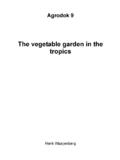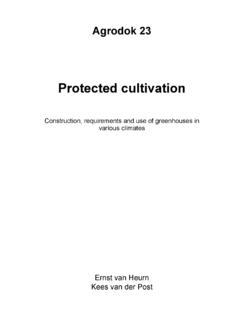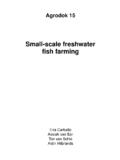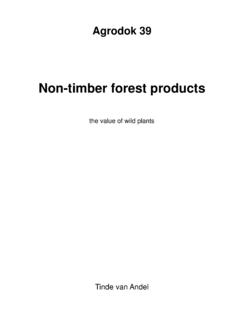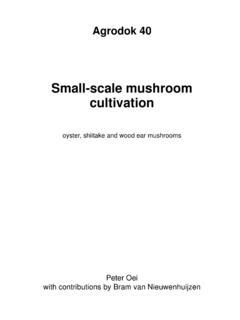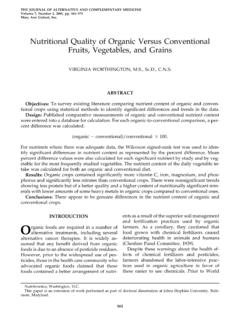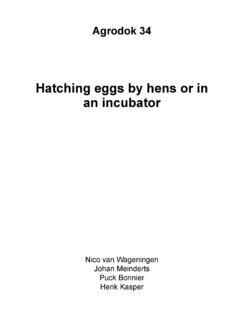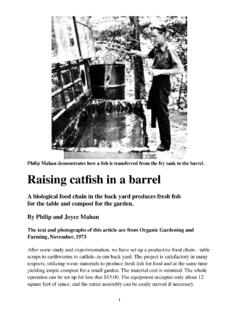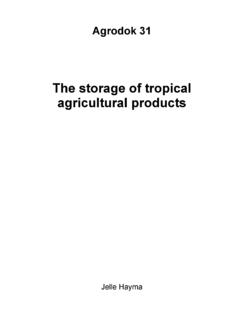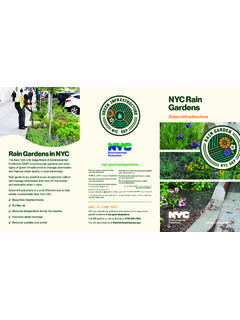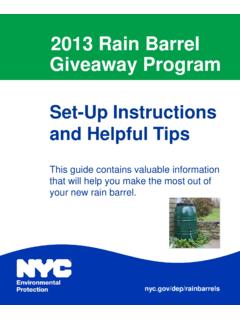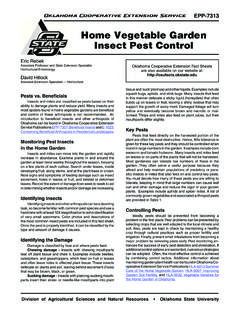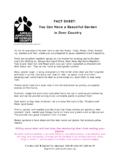Transcription of Back to Home Page Traditional Soap Making
1 May 1997 Soap Making Traditional Methods Lye rain Water Wood Ash 03/01/2011. back to home Page Traditional Soap Making Soap Clickable Flow Chart Soap Index back to home Page INTRODUCTION. Today caustic soda is normally used in soap Making . However, in some countries, caustic soda is difficult or too expensive to obtain. The aim here was to try and use old pioneering methods from the Western World, that use substances which are easily found or made in most parts of the world. These materials were originally prepared and printed as a booklet, at the request of Christians in Burma, to help in situations where normal supplies of soap are not readily available; and where caustic soda is hard to come by. This information was needed because soap can be powerful in stopping the spread of certain diseases. As some of the steps in Traditional soap Making , require repeated practice to get right, carrying out some of these methods using only small amounts of the needed things, will help people learn, without wastage.
2 This is especially true for people trying to make soap for the first time who do not have someone to show them how to do it. Diagrams and lengthy explanations have therefore been given to help people gain a better understanding. Owing to the fact that some of the people using these materials, will only speak English as a second language, when ever possible an attempt has been made to keep the language of the rest of these materials as understandable as possible. Other readers are asked to bear with any phrasing or repetition which would other-wise seem unnecessary. People wishing to make soap in larger quantities than just for a few families at a time, would find a copy of the following book very useful: Small Scale Soap Making , a Handbook. Peter Donkor, I T Publications Published London, England 1986. It also might be worth Making contact with the University of Science and Technology (UST) in Ghana:- University of Science & Technology, University Post Office, Kumasi, Ghana West Africa.
3 General E-mail Address: Tel: + 233 51 530, + 233 51 5351, + 233 51 UST Ghana URL ( ). Soap Clickable Flow Chart Soap Index back to home Page PLEASE READ:- WARNING. Some of the chemicals used in soap Making can be harmful. People experimenting with the methods and information given in these materials, or trying soaps made from the information given in these materials, do so at their own risk. There are no implied or other under-takings given in these materials. References to 'medicated', or the nature of any soap's effect on human beings is entirely conditional upon each individual's allergies and other health considerations. Poorly made soap can 'burn' your skin. The production of safe soap takes time and patience, and comes with the resulting experience. Warnings 1>, 2>, 3>. SOURCES. 1. May 1997 Soap Making Traditional Methods Lye rain Water Wood Ash 03/01/2011. These materials, have been prepared from information in many many soap Making books, which have some mention of old pioneering methods which were used up to the end of last century in America, Australia, Canada, and New Zealand.
4 Although experiments were done, the writer of these materials, has not met anyone who was still using these Non-caustic- soda methods on a regular basis. However, many of these techniques are being used in some African countries at present. Before going into the detail of actually Making soap, there is an information section which looks at the methods and other things in some detail. Table Of Contents (Within This Page). Introduction Caustic Soda Recipe Materials & Equipment More on Oils Information Sections Traditional Soap Making Method Perfuming / Colours Pouring & Setting Breaking Out Drying. Failed Soap Index Other Web Sites Soap Clickable Flow Chart Soap Index MATERIALS & EQUIPMENT FOR SOAP Making . There are only five main things needed to make soap. They are: 1) White (wood) ash, 2) rain or Spring Water 3) Animal fats (grease). 4) Plant oils, 5) Salt. In getting the fat ready, sometimes lemon juice or vinegar, potatoes or rice are needed.
5 You will need some of the following objects: Plastic buckets or big fired clay jars or pots, and large cast iron or stainless steel boiling pots can be used. NEVER use aluminium or tin things - AT ALL! Aliminium and tin are very badly corroded by the caustic chemical used in soap Making . Wooden spoons or stirring sticks will also be needed. (Sometimes an old broom handle does the job well). Something in which to set the new soap will be needed, as shown in the diagrams of these materials. Clean cloths or rags will also be needed to filter out unwanted things from some liquids. Soap Clickable Flow Chart Soap Index Making "LYE WATER". 2. May 1997 Soap Making Traditional Methods Lye rain Water Wood Ash 03/01/2011. Soap Making uses a `caustic solution' known as "Lye Water". When available, Caustic Soda is used. Here we will make Lye Water out of certain wood ashes and "soft water". 1) White Ashes Dried palm branches, dried out banana peels, cocoa pods, kapok tree wood, oak wood, (or for really white soap, apple tree wood) make the best lye ashes.
6 Ordinary wood used in cooking fires will do. Whatever wood is used, it should be burned in a very hot fire to make very white ashes. When cold, these are stored in a covered plastic bucket or wooden barrel, or stainless steel container. If these are not available, a clay pot-jar which has been fired in a pottery Making kiln (not just dried in the sun). A wooden drum or barrel which has a tap at the right is best. 2) Soft Water Water from a spring or from showers of rain is called "soft water", because it does not have metallic or acidic chemicals in it. This makes it useful for soap Making , as there are no other chemicals in it which would get in the way of Making soap. `Ordinary' bore, well, or river water can be used for Making soap, but this will sometimes need to have a "washing soda" or "baking soda" in added to it. Otherwise some of the chemicals in the water will get in the way of Making the soap.
7 If you are using `ordinary' water and you want to test it to see if some soda needs to be added, simply try to make soap bubble up (foam) in it. If the soap easily foams up, the water is probably ok as it is. If not, try adding a little bit of soda at a time stirring it to make it disappear, until the water will foam the soap up. Then add the same amount of soda to the same amounts of the water that you wish to use to make the soap. For example, if you were testing a 1/4 (a quarter) of a bucket of water, and you ended up needing 1/8 (an eighth) of a cup of soda, then you would need 4/8 ( or 1/2-half) a cup of soda for a full bucket of 'ordinary' water. However you have got it, store the "soft water" in covered wooden, plastic, or stainless steel buckets or containers. (Again, a clay-jar as described above can be used if needed.). "SAFE" CONTAINERS. Any of the types of containers, buckets, barrels or jars described in the White Ashes or Soft Water sections are called "safe containers".
8 Making "LYE WATER". Soap Clickable Flow Chart Soap Index If you are going to use a large barrel or drum to make the lye water in, and it has a tap or hole at the right, place some kind of filter on the inside of the barrel around the opening (as shown in the diagrams). Fill the barrel with white ashes to about four inches (10 cm or metre) below the top. |. |. Boil half (1/2) a bucket full of soft water (about 10. pints or six litre), and pour over the ashes. Slowly add more cold soft water until liquid drips out of the barrel. Close the tap or block the hole. 3. May 1997 Soap Making Traditional Methods Lye rain Water Wood Ash 03/01/2011. Add more ashes to top the barrel up again, and more soft water. Do not add so much water that the ashes swim. Leave to stand for four or more hours (or over night if you have the time). Later pour the brownish lye water into a plastic or other "safe" container(s).
9 Then pour back through the ashes again. Let the lye water drip into "safe" containers. When the brown lye water stops coming out of the barrel, or ash container, then pour four to five pints (2 to three litre) of soft water through the ashes, collecting the lye which comes out in a separate "safe" container (as this lye may be weaker than the first lot). Repeat this using two to three pints (one to two litre) of soft water, until no more brown liquid comes out of the ashes. Either put the lye into "safe" bottles, or cover the "safe" containers which it is in. Dig the ashes into the vegetable garden. KEEP LYE WATER AWAY FROM CHILDREN. LYE WATER IS DANGEROUS ! Soap Clickable Flow Chart Soap Index back to home Page LYE WATER STRENGTH. If an egg or potato will float just below half way, or a chicken feather starts to dissolve in it, then the lye water is at the right strength. If the egg will not float, then the lye water could be boiled down if you wanted it to be stronger.
10 If the egg seems to pop up too far, add a little bit of soft water (a cup at a time) stirring the lye water, until the egg floats so that its head pops up. 3) Animal Fat (grease). The fat of most animals can be used in the Making of soap. Grease made from beef fat, makes the best soap. Beef fat is taken from a cow, calf, steer, or bull cow, or bullock. 4. May 1997 Soap Making Traditional Methods Lye rain Water Wood Ash 03/01/2011. Once the meat of the animal has been cut away, the fat is chopped into bits and placed in a cast iron frying pan or a (not too deep) wide pot. Melted slowly over a low heat, each pound (450 gm or kg) produces about one cup of useful grease. Pour the melted grease through straining cloths (cheese-cloth). The grease must now be "washed". Soap Clickable Flow Chart Soap Index Add an equal amount of water, and bring to the boil, take off the heat, and add one quarter (1/4) as much cold water.
